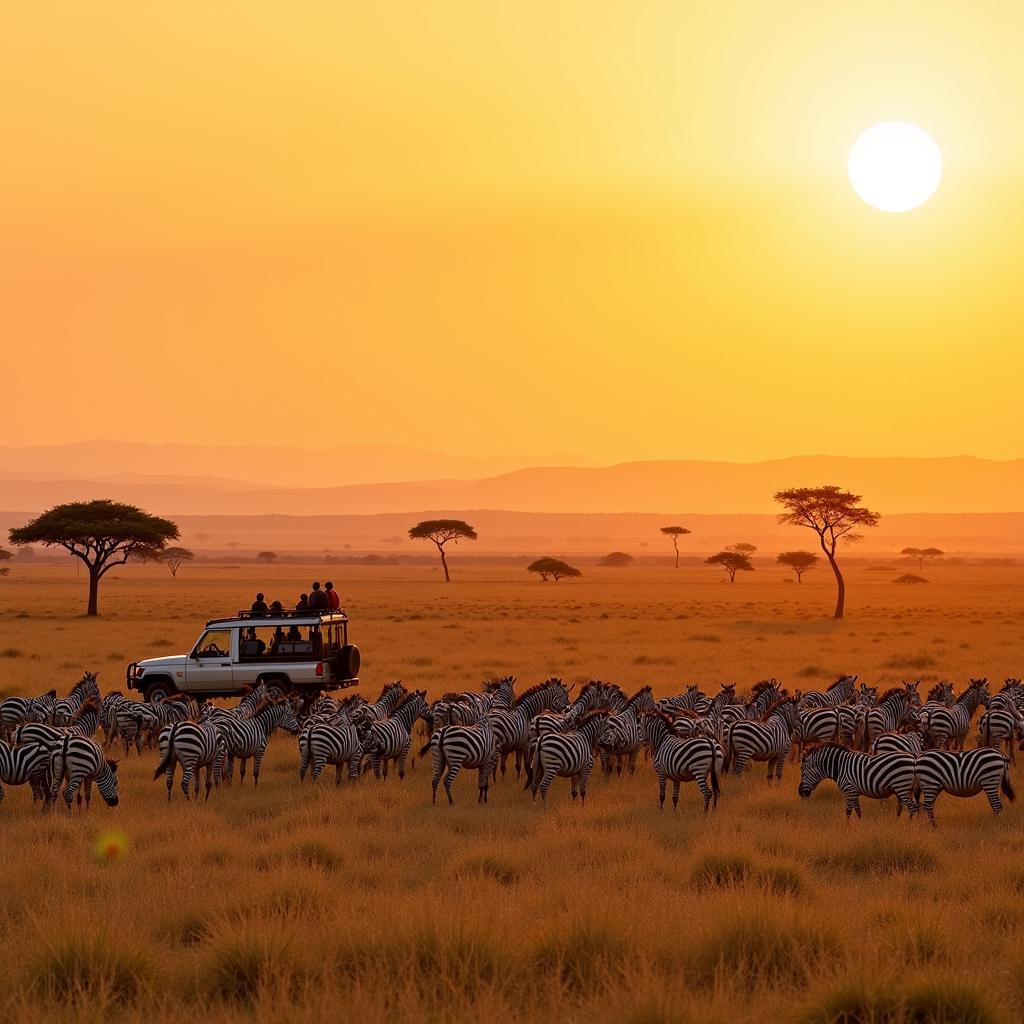The Art of Disguise: Exploring African Animals Camouflage
Africa is renowned for its incredible biodiversity, a treasure trove of unique species that have adapted to their environment in remarkable ways. Among these adaptations, camouflage stands out as a vital tool for survival, particularly in the realm of Africa’s animal kingdom.
From the grasslands to the dense forests, the savannas to the wetlands, African animals have developed a wide array of camouflage strategies to blend into their surroundings, providing them with protection from predators and the advantage in hunting.
The Wonders of Camouflage in the African Wild
Camouflage is a fascinating phenomenon where animals use their appearance to blend in with their surroundings, rendering them difficult to spot by other creatures. The effectiveness of camouflage lies in the animal’s ability to match the visual patterns, textures, and colors of its environment, ultimately confusing predators or prey.
Understanding the Science Behind Camouflage
The science behind camouflage involves a combination of physical and behavioral adaptations. These adaptations can be categorized into three main types:
- Crypsis: This is the most common form of camouflage, where an animal attempts to blend in with its background to become invisible to potential predators or prey. Animals using crypsis often have patterns, colors, and textures similar to their surroundings, making them difficult to detect.
- Masquerade: Animals using masquerade camouflage resemble a specific object in their environment, such as a leaf, twig, or rock. This allows them to avoid detection by blending in with their surroundings.
- Disruptive coloration: This type of camouflage breaks up the animal’s outline, making it difficult to discern its true shape. The patterns and colors of disruptive coloration disrupt the animal’s silhouette, effectively concealing it from predators.
Examples of African Animals Masterfully Utilizing Camouflage
Africa’s diverse ecosystems host a wide range of animals that utilize camouflage in ingenious ways. Here are some fascinating examples:
1. The Leopard: A Master of Crypsis
“[shortcode-1]leopard-camouflage-africa|Leopard camouflaged in the African bush|A leopard in the African bush perfectly camouflaged in the tall grasses and dense foliage. This image showcases the leopard’s incredible ability to blend into its surroundings, using its spotted coat to break up its outline and make it difficult to spot. The leopard’s spots are highly effective in dappled light, making it nearly invisible to prey or predators. The leopard’s hunting success relies heavily on this camouflage strategy, as it allows them to stealthily approach prey and ambush them from a concealed position. This image captures the essence of crypsis in action, highlighting the leopard’s mastery of blending into its environment.”
2. The Chameleon: A Master of Color Shifting
“[shortcode-2]african-chameleon-camouflage|Chameleon blending with its environment|A chameleon perched on a branch, showcasing its incredible ability to change its skin color to blend in with the surrounding leaves. The chameleon’s color-changing ability is a testament to its adaptability and survival instinct. Its skin cells contain specialized pigment-containing cells called chromatophores, which allow it to adjust its coloration according to its surroundings. This ability provides the chameleon with protection from predators, as well as an advantage when hunting insects. The chameleon’s color-changing talent is a captivating display of nature’s artistry and the incredible adaptability of the animal kingdom.”
3. The African Bush Elephant: Disruptive Patterns for Defense
“[shortcode-3]african-bush-elephant-camouflage|African bush elephant camouflage|An African bush elephant walking through the savanna, its gray skin covered in intricate wrinkles and cracks. These patterns serve as disruptive coloration, effectively breaking up the elephant’s large silhouette and making it harder for predators to spot them in the open grasslands. The intricate pattern of wrinkles and cracks on the elephant’s skin creates a complex visual effect that distracts predators, making it difficult to distinguish the elephant’s shape. This type of camouflage allows the elephant to blend in with the uneven terrain of the savanna, effectively reducing its vulnerability to predators.”
The Significance of Camouflage in the African Ecosystem
Camouflage plays a vital role in the African ecosystem, shaping predator-prey interactions and contributing to the delicate balance of nature. For predators, camouflage offers a strategic advantage in hunting, allowing them to ambush prey effectively. For prey, camouflage serves as a vital defense mechanism, enabling them to evade predators and survive.
“Camouflage is essential for the survival of many African animals,” says Dr. Amelia Jackson, a renowned wildlife biologist. “It’s a testament to the power of evolution and the remarkable ways that nature has equipped these animals to thrive in their respective environments.”
Camouflage contributes to biodiversity by allowing species to coexist without direct competition for the same resources. Animals that utilize camouflage can occupy niches that would otherwise be unavailable, promoting a wider variety of life within the ecosystem.
The Importance of Camouflage in the African Wildlife Conservation
Understanding the role of camouflage in the African ecosystem is crucial for effective wildlife conservation. As human activities increasingly impact natural habitats, it’s essential to consider the importance of camouflage in protecting animal populations.
“Conservation efforts must be mindful of the factors that threaten the effectiveness of camouflage,” explains Dr. Daniel O’Connell, an expert in wildlife conservation. “Habitat loss, pollution, and climate change can all impact the animals’ ability to blend in, making them more vulnerable to predators and increasing their risk of extinction.”
Key Takeaways
Camouflage is a remarkable adaptation that has shaped the evolution of many African animals. This intricate blend of physical and behavioral traits plays a crucial role in survival, allowing animals to evade predators and hunt successfully. Understanding the importance of camouflage in the African ecosystem is essential for effective conservation efforts, ensuring that these incredible creatures continue to thrive in their natural habitats.
Frequently Asked Questions
1. What are some other examples of African animals that use camouflage?
Many other African animals use camouflage, including the African wild dog, the cheetah, the zebra, the giraffe, and the African grey parrot. Each species has its unique adaptation based on its habitat and lifestyle.
2. How does camouflage help animals survive in different habitats?
Camouflage provides animals with protection from predators and an advantage when hunting. In the grasslands, animals like zebras and wildebeest use disruptive coloration to blend in with the tall grasses. In the forests, animals like leopards and chameleons use crypsis to remain hidden from their prey or predators.
3. Why is camouflage important for wildlife conservation?
Conservation efforts must be mindful of the factors that threaten the effectiveness of camouflage. Habitat loss, pollution, and climate change can all impact the animals’ ability to blend in, making them more vulnerable to predators and increasing their risk of extinction.
4. What are some ways to protect African animals that use camouflage?
Protecting habitats, reducing pollution, and mitigating the effects of climate change are essential for protecting animals that rely on camouflage for survival. Supporting conservation organizations that work to preserve these critical ecosystems is crucial for safeguarding Africa’s remarkable biodiversity.



